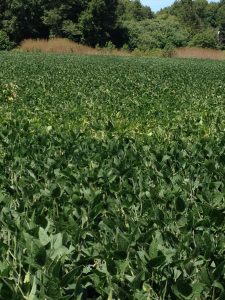As we learn more about tar spot on corn, caused by the fungus Phyllachora maydis, we can better understand how the disease works. The more we understand the disease, the better our chances of managing it successfully.
One of the things we know is that this is a disease that can overwinter in Illinois and the surrounding region. This past winter, we worked with colleagues to collect samples of surface residue DeKalb and LaSalle counties, from fields that were hit hard by tar spot in 2018. Samples were collected in mid- March, once warming trends had started. Residue was incubated and approximately 15% of the stroma extruded ascospores, which were collected and sprayed at a set concentration onto sweet corn seedlings at the V4 growth stage in a growth chamber. After eight days, plants were transferred to the greenhouse and monitored for disease. After 17 days, stromata were observed at 1% on plants, and P. maydis confirmed, thereby proving that the pathogen can survive winters. The level of infection only proves that the pathogen can survive and cause infection. We do not have a handle on the exact conditions that make this fungus emerge from dormancy and infect at the levels we see in some fields. Consequently, the 1% infection observed is likely a significant underestimation of the actual infection potential that occurs in the field.
In work currently underway, initial data indicate that the quantity of ascospores released can be large, and in our specific study vary between 1,000,000 and 10,000000 spores per g dry mass when leaf infections are at approximately 10% severity. In other studies, germination can approach 20% or more in some cases. Although this may seem like a low germination rate, this still can result in a significant infection court provided the levels of spores that can be produced. What causes the spores to be released, at least initially is not clear, as wet, cool conditions occur early in the season each year and if this was all that was required, spores would all be released before planting and never reach the plant host. Thus, some other factor must be involved in helping the fungus to time spore release to coincide with the presence of the host. We are currently working to address these questions, which will help us better understand how the disease works and inform management decisions.
To link to the public summary and access the article, click here

